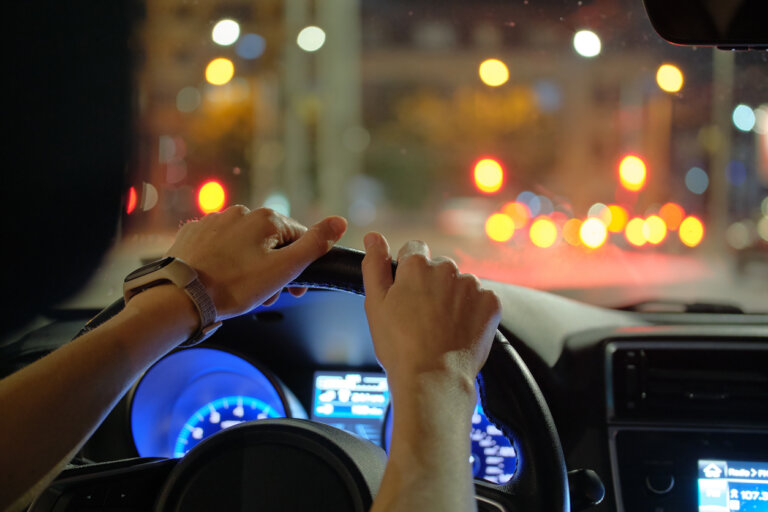Driving at night is generally riskier than driving during daylight hours for several reasons. As a result, there is an increased likelihood of vehicle accidents during the evening hours. Some of the key factors that make nighttime driving more hazardous include:
Reduced Visibility
One of the most significant challenges of driving at night is reduced visibility. Darkness impairs your ability to see the road, other vehicles, pedestrians, and obstacles. Headlights and streetlights help, but they can only illuminate a limited distance ahead.
Glare and Reflections
Oncoming headlights, streetlights, and reflective road signs can create glare, which can temporarily blind drivers or make it difficult to see the road clearly.
Fatigue and Drowsiness
Nighttime driving often coincides with people’s natural circadian rhythms, making them more prone to fatigue and drowsiness. This can impair reaction times and decision-making abilities. Many people are more tired at night, especially after a long day of work or other activities. Fatigue can slow reaction times and impair judgment while driving.
Reduced depth perception
Depth perception is an important aspect of safe driving. At night, it can be more challenging to judge distances between your vehicle and other objects, which can lead to an increased incidence of accidents.
Wildlife activity
Many animals are more active at night, and their movements can be unpredictable. Collisions with animals like deer or raccoons are more common at night and can lead to accidents.
Drunk driving
Statistics show that roughly 50% of drunk drivers consumed their last drink at a bar or restaurant. A higher percentage of alcohol-impaired drivers are on the road at night increases the risk of vehicle accidents. Bars and clubs often close in the early hours of the morning, and some people unwisely choose to drive home. You might especially see an increase in impaired driving due to alcohol or drugs on weekend evenings or during celebrations and holidays.
Reduced visibility of road hazards
Potholes, debris, and other road hazards are more challenging to spot at night, increasing the risk of hitting them.
Impaired judgment
Some drivers may engage in risky behaviors, such as speeding or distracted driving, at night, thinking there are fewer law enforcement officers on the road.
Weather Conditions
In states like Michigan, which experience winter weather, nighttime temperatures can cause roads to freeze, making them slippery. Snow and ice can make night driving especially hazardous.
Lesser traffic, higher speeds
Ironically, because there’s often less traffic at night, some drivers might feel it’s safe to speed or drive recklessly. This can lead to severe accidents.
To reduce the risks associated with nighttime driving, it is important to take safety precautions:
- Ensure your headlights, taillights, and turn signals are working correctly.
- Keep your windshield and headlights clean to minimize glare.
- Reduce your speed and increase following distance to account for reduced visibility.
- Stay well-rested and avoid driving when you are fatigued.
- Be especially cautious in areas with a higher likelihood of wildlife crossings.
- Never drive under the influence of alcohol or drugs.
- Minimize distractions and focus on the road.
Remember that nighttime driving requires extra vigilance and caution to mitigate the increased risks associated with reduced visibility and other factors.
Contact Our St. Clair Shores Car Accident Attorney Today
Should you find yourself in a car accident as a result of the other driver’s liability that arises from nighttime hazards, and have suffered injuries or damages, consult The Nunley Law Group. We can help you understand your rights, evaluate the strength of your case, and guide you through the process.

